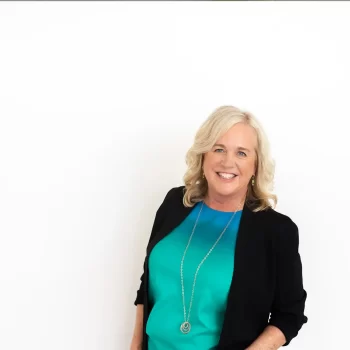4 Big Benefits of Creating a Packaged Offer for Your Coaching, Consulting or Creative Business
If you are building a business as a coach, consultant, or creator, your number one priority needs to be to get clear on what you sell. For many service-based businesses that list should include a packaged offer.
In the beginning, especially before you’ve developed a program or methodology, it makes sense to work 1:1 and charge by the hour. You can set your price, track your time, and either have people pay upfront or send an invoice after the work is complete. But once you’ve been in business for a while, you may want to consider consolidating your expertise into a packaged offer.
There are 4 main reasons to create a packaged offer vs. charging by the hour:
- Packaged offers are standardized
- Some packaged offers are self-service
- Packaged offers can help you deliver more value to customers
- Packaged offers can create additional revenue streams for your business
What is a packaged offer?
A packaged offer is a way that a person who sells services can consolidate their knowledge or program in a standardized way that goes beyond charging an hourly rate. This can work in any industry or niche and is suitable for both business-to-business (B2B) as well as business-to-consumer (B2C) types of businesses. A B2B example of a packaged offer might be a copywriter who delivers a certain number of web pages for a fixed price. A B2C example might be a dog trainer who sells an online course on how to crate-train a puppy.
Here are some popular packaged offer formats:
- Group coaching
- Online courses
- Workshops
- VIP Days
- Coaching or consulting programs where clients enroll for a certain number of sessions to achieve certain results
- Membership programs
- Digital products like ebooks, workbooks, templates, checklists, calendars, etc.
Now that we’re all aligned on what I mean by a packaged offer, let’s take a look at the advantages of creating a packaged offer for your business:
Offers are standardized
A lot of consultants and creative service providers create original offers for each client — especially for larger and long-term projects. But if there’s a specific service where you can offer a start-to-finish solution, it often makes sense to turn this into a product for a fixed price. Offers like this might include:
- A designer offering a brand identity package
- A web designer/developer offering a website creation service
- A bookkeeper offering a quarterly Quickbooks checkup
Offers can be self-service
The potential of creating a self-service packaged offer in the form of an online course or similar is extremely popular and has advantages for both the service provider and their customers. For the coach, consultant, or creator, it creates an opportunity to create a lesson once and then sell it over and over again. In addition to the financial advantage, it can potentially free up calendar space. However, the watch out here is that the time once spent serving clients is now simply shifted to sales and marketing activities.
Packaged offers can help you create more value for customers
Packaged offers can potentially offer additional value to customers. First, they have the potential to make it easier to provide tailored solutions. Especially if a methodology is long and complex, if it is packaged, it may be possible to break it down into parts making it easier to “meet the client where they are.” For instance, if you have an intermediate client, they may not need the parts of your system that are for beginners.
Second, is that packaged offers can often be delivered faster than 1:1 services where calendars don’t need to be aligned. Many customers get the added benefit of immediate gratification.
Third, packaged offers, whether they are DIY or the currently popular done-with-you (think cohort based online courses with live components) can often be delivered at a more accessible price point than 1:1 work with the expert.
Additional revenue streams
Many leaders in online business still have active traditional client businesses, especially in the creative services and consulting areas. But they have added packaged offers as complementary revenue streams. The complementary revenue streams can work in multiple ways:
They can increase the overall value of your current customer segment. So going back to our dog trainer example – the charge might be $500 for the training and then an additional $100 for the online course – increasing the value of that client from $500 to $600 with no additional hours required outside of creating the course.
They can open up new customer segments. There might be a segment of customers who don’t want to spend $500 on dog training but are willing to spend $100 on the online course to learn how to do it themselves.
How to create a packaged offer for your coaching, consulting or creative business
The high level steps in creating an offer, whether it’s your first one or you twenty-first one, are pretty much the same:
Decide where the offer fits in your business.
Are you trying to access a new markets segment? Sell repeat customers? Introduce new people to your business in a low-risk way?
Define your target customer.
If you’re trying to reach new customers, what do you know about them?
Decide what problem you are solving.
Based on what you know about your target customer, what challenges do they have that are related to your business? Why are they motivated to get their problem solved?
Design the offer.
What kind of solution does your customer want and how can you deliver the best results? What kind of business do you want to build (high-touch, hands-off, etc.)
Communicate the transformation.
Especially if you’re trying to reach a new audience, you need to focus on what your customers will get if they buy from you. Too often, as service providers, we get too hung up on the “how” because that’s the system or methodology we invented and we’re proud of it. But your customer doesn’t care much about the how. What they want is whatever is waiting for them at the end.
Set your price.
Set your price relative to the transformation you can deliver, not on the time it takes to get there or the volume of information/steps etc. in your program. Additionally, you’ll need to consider your revenue expectations from this offer and how many you think you can sell. For instance, if this packaged offer is going to form the core of your business, it needs to generate 70% of your revenue. What does that look like assuming your revenue needs to cover your business expenses and your salary?
For more help with developing your packaged offer, grab my free, step-by-step, Ultimate Offer Creation Guide that will get you off the whiteboard and hitting publish on your sales page.




